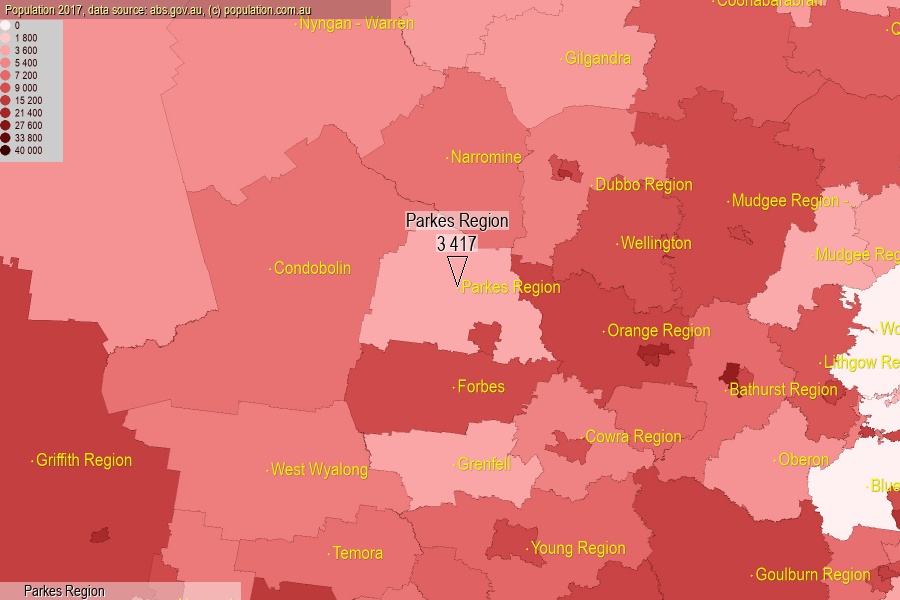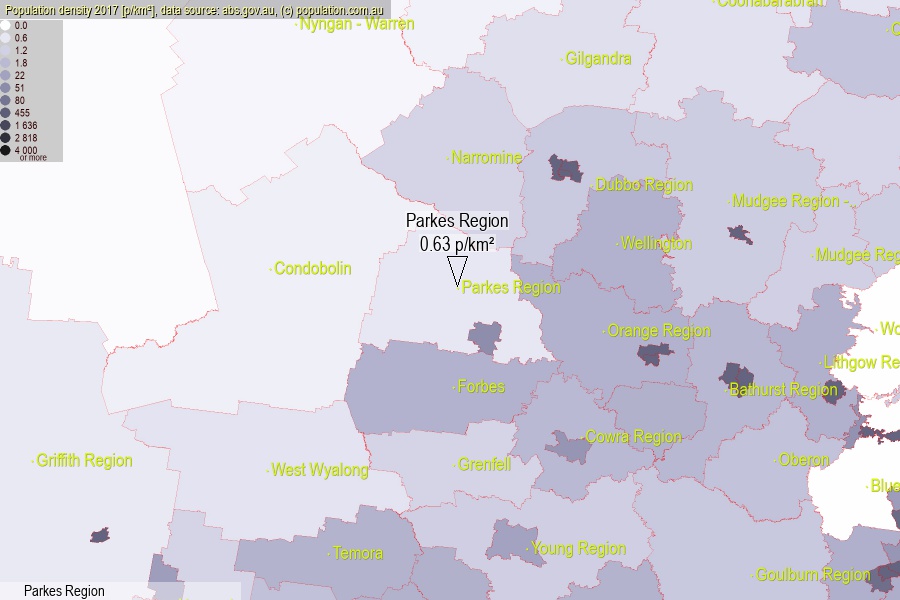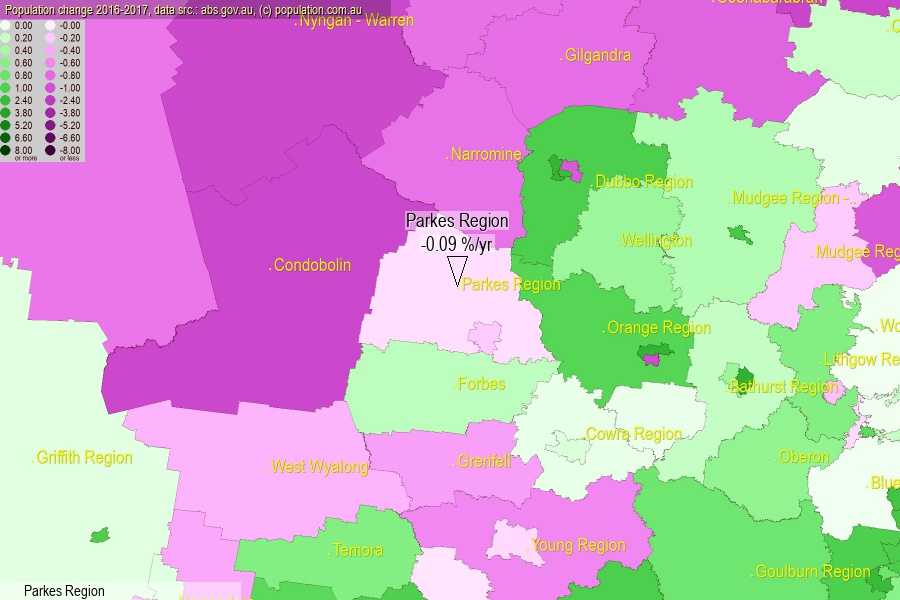 population.com.au
population.com.auLast official estimated population of Parkes Region (as Statistical Area Level 2) was 3 417 people (on 2017-06-30)[2]. This was 0.01% of total Australian population and 0.043% of NSW population. Area of Parkes Region is 5 418.20 km², in this year population density was 0.63 p/km² . If population growth rate would be same as in period 2016-2017 (-0.09%/yr), Parkes Region population in 2025 would be 3 393. [0]



Click to enlarge. Parkes Region is located in the center of the images.
Population [people], population density [p./km²] and population change [%/year] [2]
View borders » (new window) [4]
[1991-1992] +0.36 %/Yr.
[1992-1993] +0.05 %/Yr.
[1993-1994] +0.28 %/Yr.
[1994-1995] +0.21 %/Yr.
[1995-1996] +0.10 %/Yr.
[1996-1997] -0.72 %/Yr.
[1997-1998] -0.59 %/Yr.
[1998-1999] -0.49 %/Yr.
[1999-2000] -0.86 %/Yr.
[2000-2001] -0.58 %/Yr.
[2001-2002] -1.16 %/Yr.
[2002-2003] -1.47 %/Yr.
[2003-2004] -2.17 %/Yr.
[2004-2005] -1.80 %/Yr.
[2005-2006] -1.58 %/Yr.
[2006-2007] -0.34 %/Yr.
[2007-2008] -0.37 %/Yr.
[2008-2009] -0.03 %/Yr.
[2009-2010] +0.75 %/Yr.
[2010-2011] +0.17 %/Yr.
[2011-2012] -0.40 %/Yr.
[2012-2013] -0.63 %/Yr.
[2013-2014] -0.43 %/Yr.
[2014-2015] -0.29 %/Yr.
[2015-2016] -0.41 %/Yr.
[2016-2017] -0.09 %/Yr.
[0] Calculated with linear interpolation from officially estimated population
[1] Read more about SA2 and Australian Statistical Geography Standard (ASGS) on abs.gov.au
[2] Population data from Australian Bureau of Statistics (Population and density: 2017; change: 2016-2017)
[3] Digital Boundaries: Australian Statistical Geography Standard (ASGS) 2016.
[4] Border coordinates are simplifyed using Ramer-Douglas-Peucker algorithm.